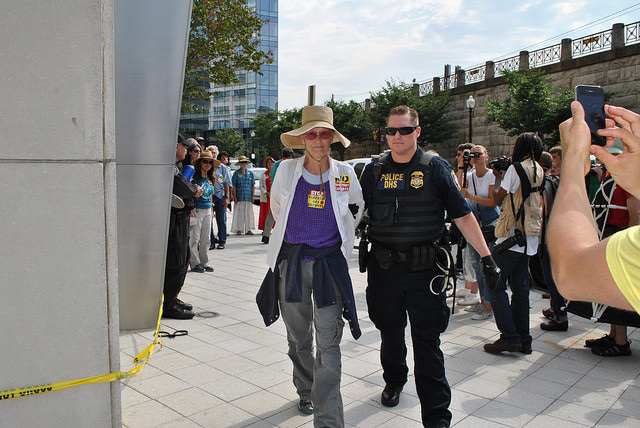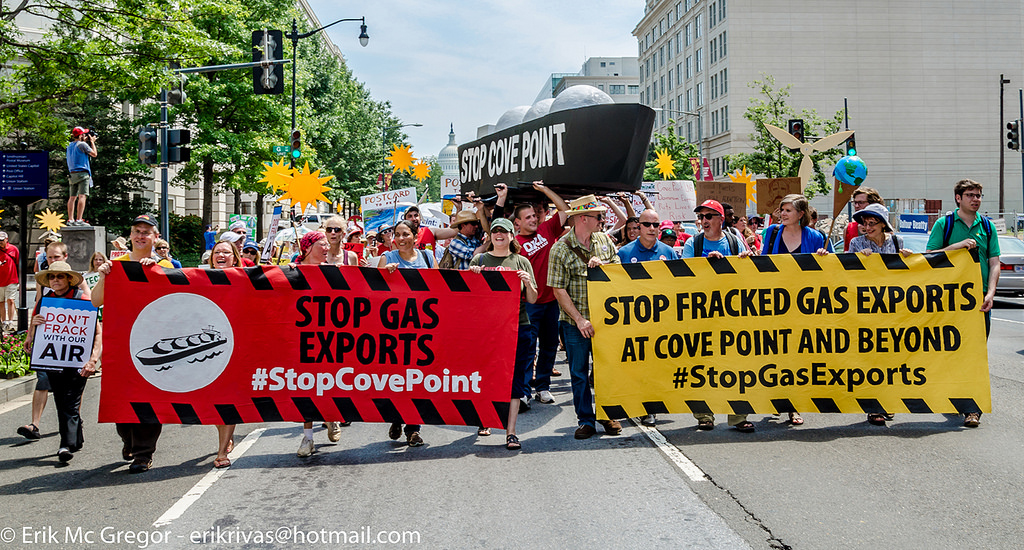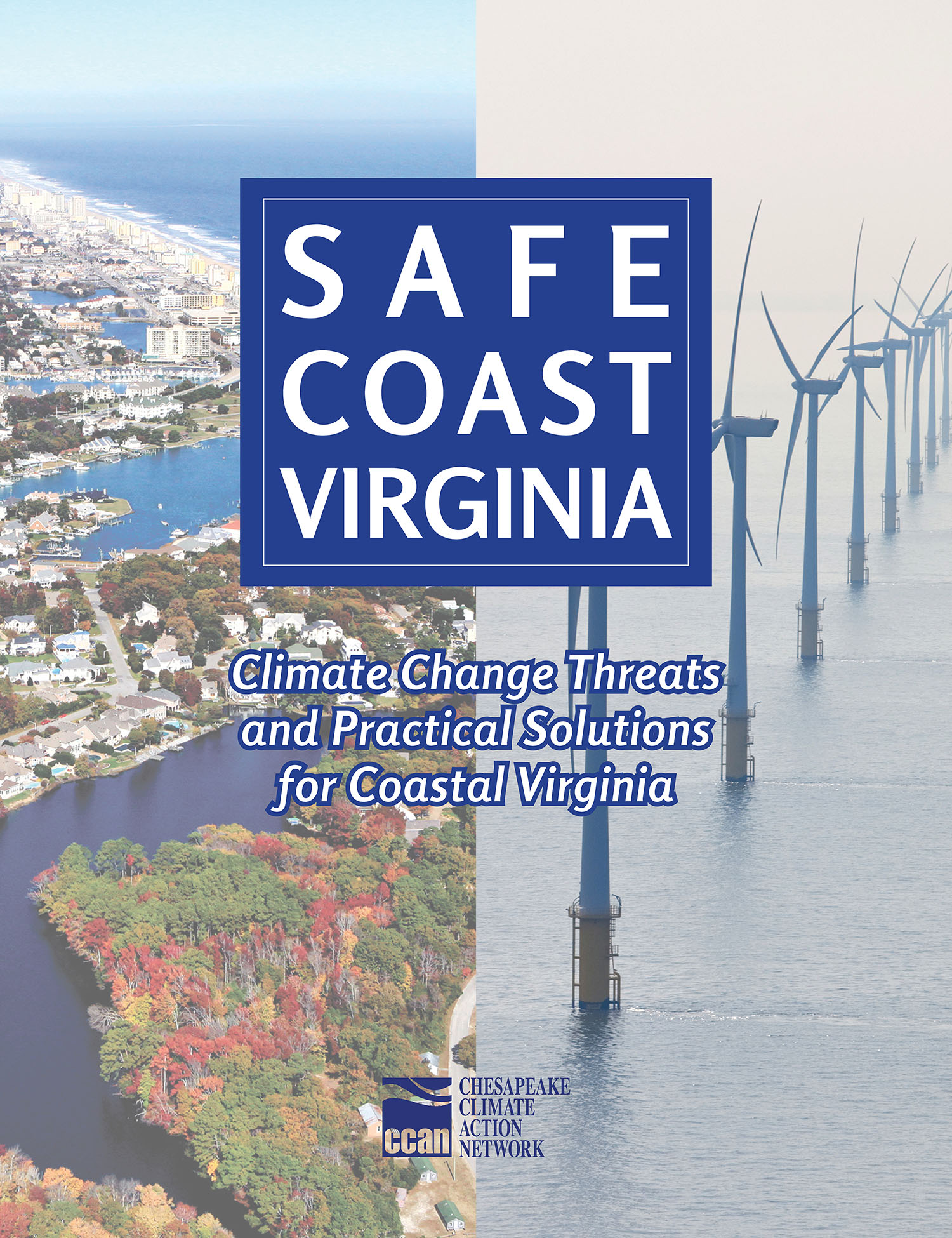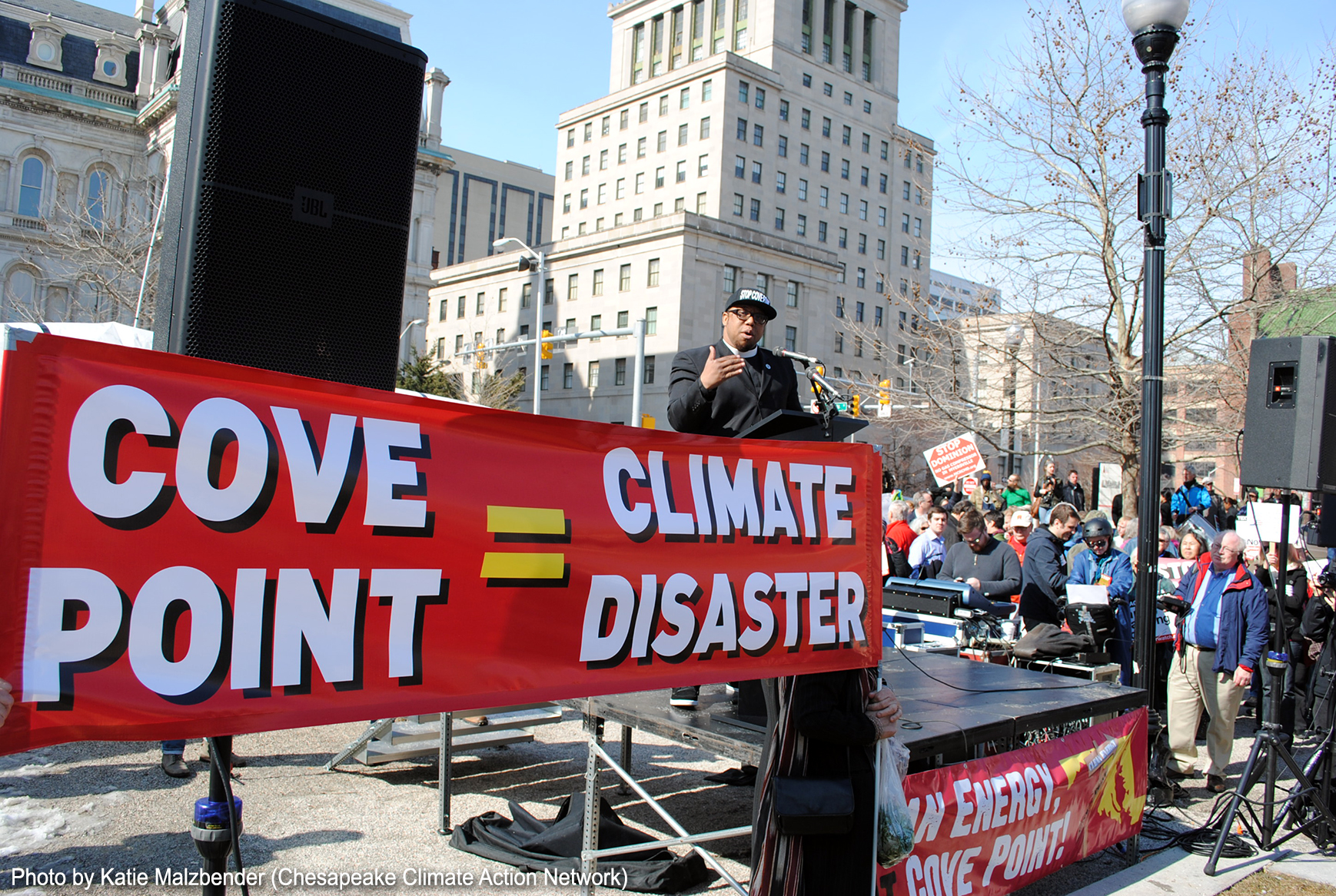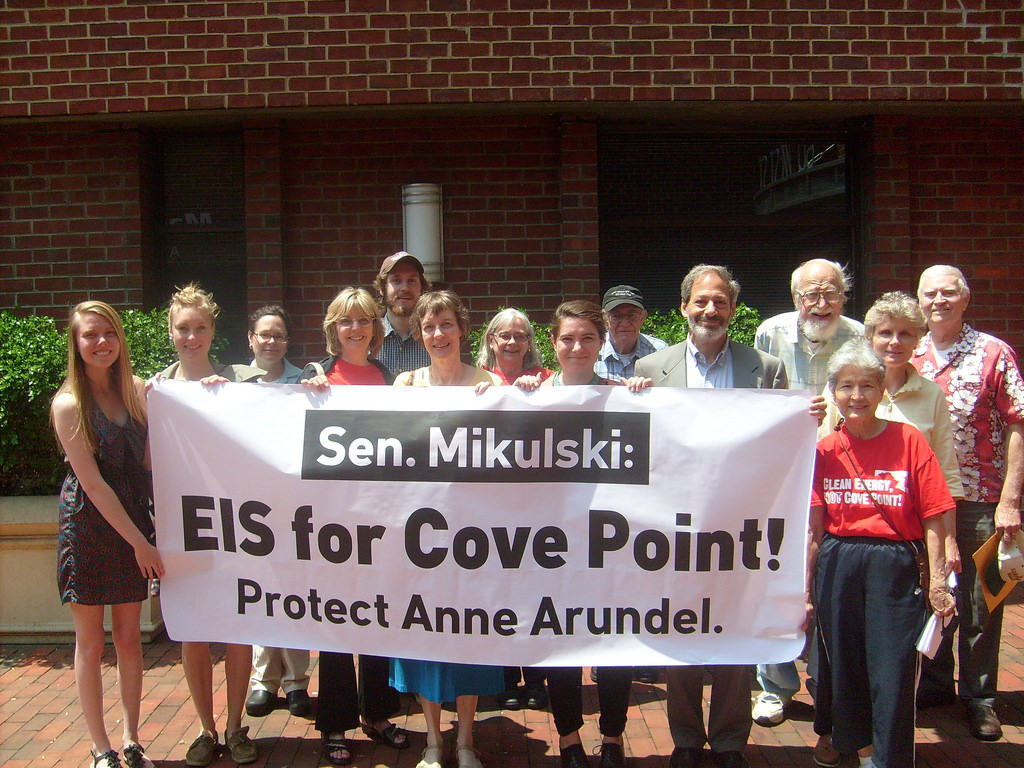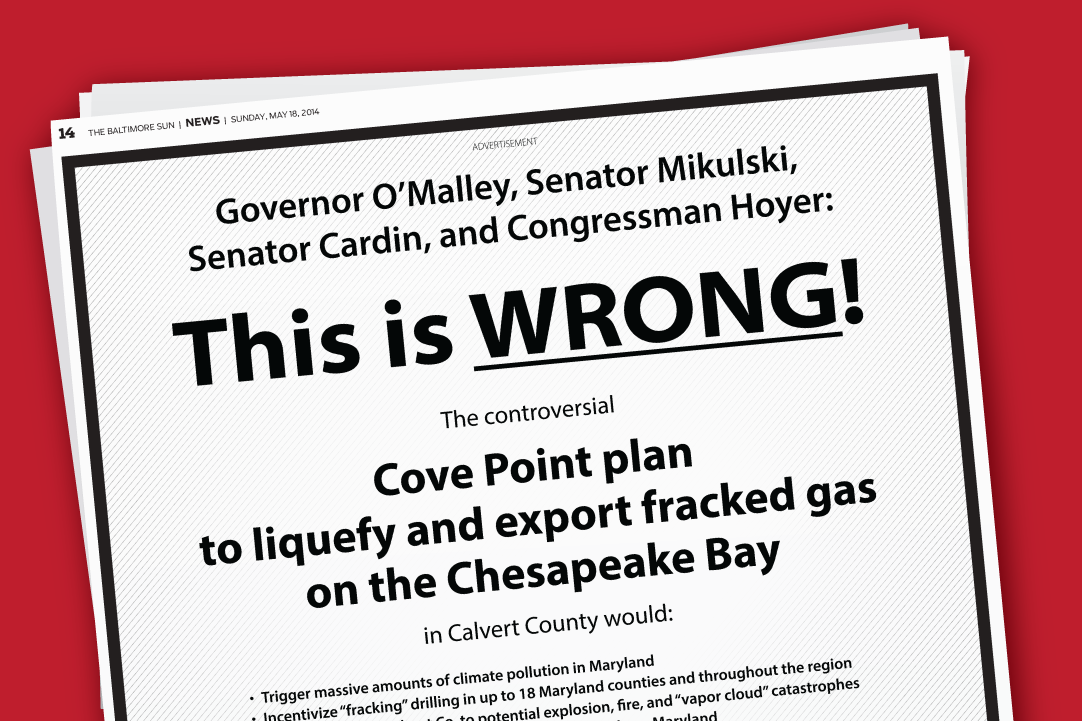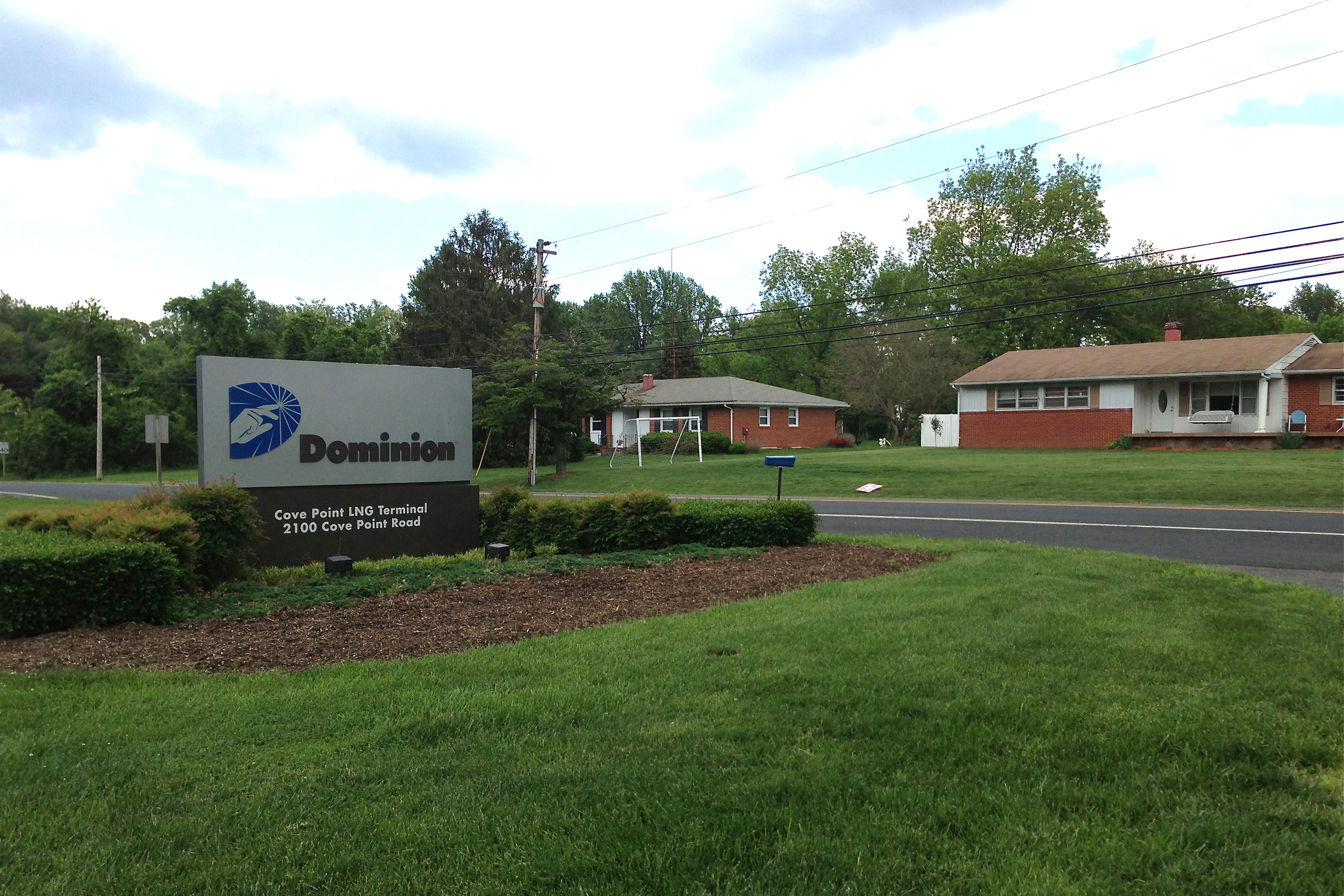This morning, the inbox of the Federal Energy Regulatory Commission is being flooded with tens of thousands of messages from people all across the nation saying “no” to fracked gas exports. Today is the final day to submit a public comment urging FERC to reject the “poster child” for a disastrous gas industry plan to export natural gas: the Cove Point terminal proposed just 50 miles from the White House on the Chesapeake Bay in southern Maryland. (You can click here to take action by the 5pm deadline.)
And while we’re flooding FERC’s inbox today, anti-fracking marchers will flood the streets outside of FERC’s headquarters on Sunday, July 13th. Why?
The short story is this: FERC is on the verge of rubber-stamping a massive expansion of fossil fuel exports — fracked gas exports — that would spell disaster for the climate. It would harm communities all along the chain of new fracking wells, pipelines, compressor stations, and gas “liquefaction” plants involved in the process. And, as the gas is exported overseas (almost entirely to Asia) gas prices would even rise here at home, meaning virtually all Americans lose while wealthy gas corporations profit. This is exactly the wrong direction for our country and for our climate — and that’s where you come in.
On Sunday July 13th, we take our grassroots movement for clean energy, not fracked gas exports, straight to Washington, DC. We know that the five-member FERC commission – appointed by President Obama – has a shameful track record of rubber-stamping virtually all gas industry projects brought before it. Now is our time to demand a change in course.
Join thousands of Americans in Washington, DC on July 13th to send a strong message to President Obama and FERC: Keep the gas in the ground. Wind and solar power now!
To spread the word, the internet will be abuzz this week with the Stop Gas Exports Blogathon. Every day through Saturday, movement leaders like Bill McKibben, Sandra Steingraber, and Rev. Lennox Yearwood Jr. and everyday fracking fighters will be blogging about different aspects of liquefied natural gas (LNG) exports and why they’re not the solution to our energy and climate woes. Follow #stopgasexports and www.stopgasexports.org for all the updates and to share with your friends!
To learn more today, check out the full run-down of frequently asked questions below.
__________________________________________________
[bs_collapse id=”collapse_a1f3-fc1b”]
[bs_citem title=”Why are thousands of Americans coming to Washington DC on July 13th?” id=”citem_3062-c96d” parent=”collapse_a1f3-fc1b”]
From the Chesapeake Bay to the Gulf of Mexico to the Oregon coast, the gas industry is proposing to build more than 20 LNG export facilities.If the gas industry has its way, it will ship so much carbon overseas it will be like building 100 new coal plants. Fracking wells and their associated explosion-prone infrastructure will proliferate. And over time it could double or even triple the current domestic price of gas.
As we call out the president for his support of fracking, we’ll turn up the pressure on FERC to protect the American public and stop being puppets to the fossil fuel industry. To date, FERC has approved virtually all oil and gas infrastructure proposals brought before it. That’s why we’re demanding change — thousands of Americans from areas affected by gas exports will say “no way” to more rubber stamps that subject more and more communities to expanding pipelines, compressor stations, export terminals and other fossil fuel infrastructure.
But we’re not just opposed to things, and we’re using our people power to push for the positive change we need. On July 13th we’ll proudly and loudly say “yes” to wind power and solar energy and efficiency investments. Wind farms don’t cause earthquakes. Solar panels don’t poison our drinking water. And energy efficiency doesn’t leak methane. But they DO create jobs and a stable climate.
[/bs_citem]
[bs_citem title=”Why is exporting natural gas bad for the climate?” id=”citem_9aca-e4b3″ parent=”collapse_a1f3-fc1b”]
Natural gas is mostly comprised of methane, a potent heat-trapping gas that can leak into the atmosphere at every stage of the drilling and export process. The gas industry has run an elaborate hoax, touting itself for representing the “clean” fossil fuel. But if you consider the full lifespan of exported gas, from fracking, piping and compressing it across America, liquefying it, shipping it 6,000 miles to Asia, and then regasifying it, piping it more and finally burning it, this process has a climate impact that is is as bad as — or worse than — burning coal! A recent study by the U.S. Department of Energy found that, over a 20-year timeframe (the critical window for tackling the climate crisis), LNG exports to Asia would likely be worse for the climate than if Asian countries burned coal. According to Climate Progress, “a close reading of the DOE report in the context of the recent literature indicates that exporting natural gas from the U.S. as LNG is a very poor idea.”
[/bs_citem]
[bs_citem title=”Who is responsible for approving a natural gas export facility?” id=”citem_77fb-52df” parent=”collapse_a1f3-fc1b”]
Before a natural gas export facility can be built, it needs a number of local, state, and federal permits. For Cove Point and other projects on FERC’s existing docket, the US Department of Energy (DOE) was responsible for first analyzing whether or not shipping LNG to countries where the US doesn’t have an existing free trade agreement is in our national interest. Then, FERC looks more specifically at the safety and environmental impacts of the project, based on standards laid out in the National Environmental Policy Act. In the case of Cove Point, FERC released an Environmental Assessment on May 15, and gave the public a mere 30 days to comment in return. In late May, DOE changed up the federal review process for future LNG export projects — DOE will now release its final public interest determination only after environmental reviews for proposed plants are completed.
Ultimately, President Obama’s administration needs to reverse its approach to these destructive projects. President Obama can’t meet his promises to solve the climate crisis by overseeing a massive expansion of fracked gas infrastructure that vents harmful methane into our warming atmosphere.
[/bs_citem]
[bs_citem title=”If there are significant risks involved, isn’t FERC obligated to reject these plans?” id=”citem_60f3-382e” parent=”collapse_a1f3-fc1b”]
Morally, yes. And, if FERC fully followed the law, yes. However, FERC has approved almost every project that the oil and gas industry has put before it, rubber-stamping several facilities that have gone on to have fatal accidents. Earlier this spring, a case brought against FERC by residents of Minisink, NY to challenge FERC approval of a compressor station, highlighted this track record. Attorneys for Minisink argued that FERC is “predisposed to sign off on projects.”
In many cases, FERC will “segment” its review of permits, considering individual parts of a gas infrastructure project to, in effect, disguise the cumulative environmental consequences. In another recent case, the DC Circuit court ruled in favor of the Delaware Riverkeeper Network, New Jersey Highlands Coalition, New Jersey Sierra Club finding that, in reviewing a pipeline expansion proposal, “FERC acted arbitrarily in deciding to evaluate the environmental effects of the Northeast Project independent of the other connected action.”
In the recent case of Cove Point, FERC’s Environmental Assessment swept the project’s many dangers under the rug, absurdly concluding that this $3.8 billion fracked gas export plan would have “no significant” impact on the environment or human health while failing to analyze its role in driving expanded fracking or the cumulative climate change pollution it would trigger. Unless FERC substantially revises its insufficient analysis, environmental groups will likely sue the agency for violating the National Environmental Policy Act.
[/bs_citem]
[bs_citem title=”Where are gas exports being planned in the US?” id=”citem_2676-5c60″ parent=”collapse_a1f3-fc1b”]
There are currently 14 U.S. LNG export facilities proposed to FERC, from Oregon to Texas to Louisiana to Mississippi to Maryland. In Maryland, the Cove Point terminal, proposed by Virginia-based Dominion Resources, would be the first fracked gas export facility on the East Coast, and the first facility located so close to schools, daycares, a public park, and many private residences. There are 4,000 homes within 2 miles of Dominion’s proposed export facility, and local residents are deeply concerned about an accident on the facility that could escalate into a major fire or other life-threatening event.
[/bs_citem]
[bs_citem title=”How do I know I won’t see the benefits of gas exports?” id=”citem_ab19-dd3a” parent=”collapse_a1f3-fc1b”]
If all the proposed LNG export projects in the U.S. are approved, the result would be the export of more than 40 percent of our current production of natural gas. This means more competition at home, and thus, higher prices for domestic consumers and industries. In fact, a study commissioned by the Department of Energy shows that exporting natural gas would harm every major sector of the U.S. economy — except the gas industry.
In the example of Cove Point, the Maryland Public Service Commission concluded that the “LNG facility will not provide net economic benefit to Maryland citizens,” despite granting Dominion a conditional partial permit. In fact, the 130 megawatt gas-fired power plant Dominion would have to build onsite to fuel the energy-intensive “liquefaction” process will provide ABSOLUTELY NO electricity for Maryland’s grid. That means we see all of the pollution and risk and none of the energy.
[/bs_citem]
[/bs_collapse]
____________________________________
